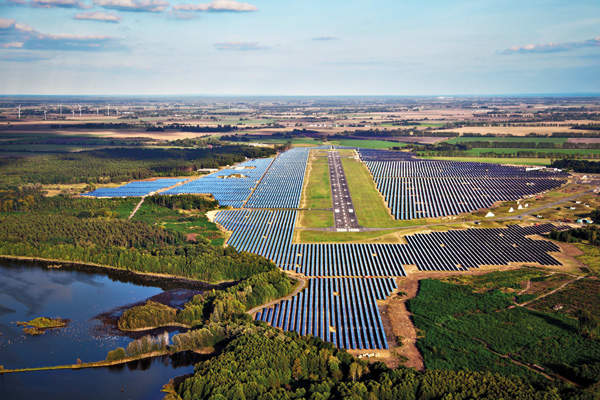The world’s energy scene is changing fast as more countries switch to renewable energy. This shift isn’t just about saving the planet, it’s also reshaping how power works on a global scale, affecting relationships between countries, boosting economies, and setting new examples for climate action.
Geopolitical Shifts: One big change is how countries with lots of renewable energy, like solar and wind power, are becoming more important. This is shaking up the old ways of doing things, especially in places that used to rely mainly on fossil fuels. For example, countries in the Middle East and Africa, known for their oil production, are now looking at solar energy as a way to diversify their economies and reduce their environmental impact.

Energy Independence: Another key point is that many countries are aiming to produce more of their own energy. By using renewable energy, they’re not as dependent on fuel from other countries. This makes them more secure and helps them develop new technologies for clean energy. Take Germany, for instance, which has made significant strides in wind and solar power, reducing its reliance on imported energy and creating jobs in the renewable energy sector.

Diplomatic Relations: Renewable energy projects are bringing countries together. They’re teaming up on things like solar and wind farms, which not only helps fight climate change, but also builds stronger relationships between nations. For example, the European Union and its neighbors are working together on renewable energy plans, which is making their relationships stronger and fostering a spirit of collaboration in addressing global challenges.
Economic Opportunities: Economically, going green is creating lots of new jobs and opportunities. It’s not just about saving the environment; it’s also about growing industries and attracting investments. Places that invest in renewable energy are seeing more businesses popping up and more money coming in. In the United States, states like California are leading the way in renewable energy investments, driving economic growth and innovation in sustainable technologies.
Climate Leadership: Leading the charge are countries that are taking big steps to use more renewable energy. They’re not just talking about it, they’re actually doing it, and that’s inspiring others to follow their lead. This kind of action is making a real difference in fighting climate change and making the world more sustainable. Countries like Denmark, known for their wind energy expertise, are setting examples for sustainable development and showing the world that clean energy is not only possible but is beneficial for everyone.
Essentially, switching to renewable energy isn’t just good for the planet–it’s also changing how power works globally. Renewable energy is bringing countries together, creating jobs, and showing that humanity can tackle big problems if people work together.
Work Cited:
Climate Lead (Climate Lead) – Philanthropy for Climate Solutions. (n.d.). Climate Lead. Retrieved April 23, 2024, from https://climatelead.org/
Commission, C. E. (n.d.). Investing in Energy Innovation. Www.energy.ca.gov. Retrieved April 23, 2024, from https://www.energy.ca.gov/about/core-responsibility-fact-sheets/investing-energy-innovation
The Age of Renewable Energy Diplomacy. (2017, November 29). Www.irena.org. https://www.irena.org/News/articles/2017/Nov/The-Age-of-Renewable-Energy-Diplomacy
Hassan, Q., Al-Hitmi, M., Tabar, V. S., Sameen, A. Z., Salman, H. M., & Jaszczur, M. (2023). Middle East energy consumption and potential renewable sources: An overview. Cleaner Engineering and Technology, 12, 100599. https://doi.org/10.1016/j.clet.2023.100599




















